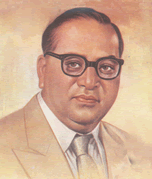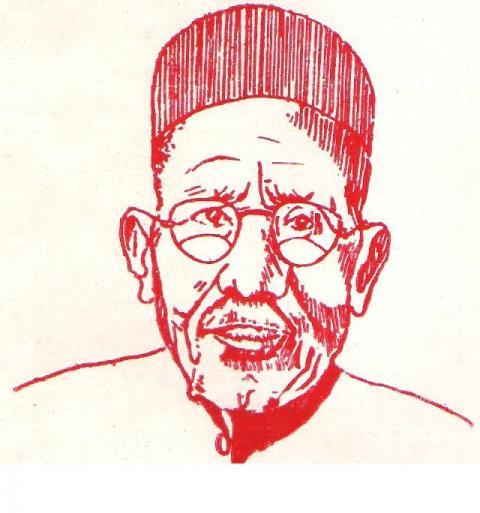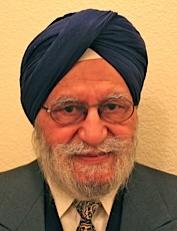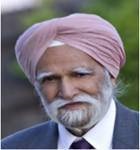This
website is dedicated to our great savior Dr. B. R. Ambedkar in
the memory of Babu Mangu Ram Mugowalia, our great freedom fighter
& the founder of Ad Dharm |
|||||||||
|
|||||||||
|
|||||||||
|
|||||||||
The Modesto City Schools established a World Religions course as a graduation requirement in the year 2000, as a 9-week study paired with a 9- week geography component to form a semester course. The course was developed by a teachers’ curriculum committee that worked closely with an advisory group of parents and religious leaders from the local community. The committee determined that it was important to start by introducing students to America’s religious tradition. This opening unit includes discussions of Roger Williams and the establishment of Rhode Island, the concept of separation of church and state and the significance of each of the five rights listed in the first amendment. This historical overview of religious freedom allows the teachers to discuss the responsibility of safeguarding rights across all areas of the Constitution. The district’s character traits of responsibility and respect are highlighted as students are taught the importance of listening to others and making appropriate comments that will not be offensive. Following this introduction, the course includes study Hinduism, Buddhism, Sikhism, Judaism, Christianity, and Islam. The emphasis is on the academic information for each religion; geographical location, founder, holy book(s), major beliefs, history and cultural impact, etc. The information is portrayed from a neutral academic standing. Students learn about each religion but are not asked to practice or participate in any religious activities. All seven comprehensive high schools in the district use a common curriculum. All teachers undergo 40 hours of training before they may teach the course. Originally, the training included video lectures from local universities drawing attention to the major beliefs of each religion. Further, teachers were invited to meet with community members from different faiths and discuss their curriculum. Budget squeezes have limited these. However, the district has remained very supportive and has provided posters, books, and age-appropriate DVD’s for each school. The Modesto teachers used the California State Social Science Framework Elective Guidelines (p. 121) in selecting the religions to be included in the class. However, it was decided to also include Sikhism because of the large Sikh community in Stanislaus County. Some students at each high school campus are from Sikh community and wear the turban. In years past there were many misunderstandings. Other students and staff often mistakenly identified Sikh students as followers of Hinduism or Islam. Once the class was in place, these misconceptions were able to be addressed and all students felt more accepted within their learning communities. This is just one of many examples of how the class has created opportunities for discussion that are not only helpful for understanding the social sciences but are also beneficial to the student population. California has a very large Sikh community. The teachers’ curriculum committee of Modesto City Schools believes that Sikhism should be added to the California’s Social-Science Framework, in the elective on World Religions. One of the main goals of creating the course was to help students learn to find common ground. The process of creating the curriculum itself was an ongoing discussion with stakeholders from throughout the Stanislaus County Region. The process was very rewarding in terms of discussing sometimes difficult issues but reaching a consensus that there was common ground upon which all Americans stand. A decade after its creation, the World Religions course is still providing a valuable background which helps students understand the cultural and historical significance of religion before they take world history. More importantly, students continue to explore the relationship between rights and responsibilities and they come away from the course with a better understanding of their peers and people in their immediate community. The
Modesto City Schools World Religions Class has been positively
received in the following: (1) Doctoral thesis
of Professor Emile Lester- College of William and Mary- Learning
About World Religions in Public Schools- funded by the First
Amendment Center of Washington D.C.- 2005 (2). C-span TV presentation-
Close up TV Show review of Emile Lester’s findings (3).
Teaching Tolerance Magazine- “One Nation, Many Gods”
2007 (4). CBS Evening News- June 28, 2008 “Teaching, Not
Preaching, In CA Bible Belt”(5). NPR Day to Day show presenting
the World Religions Class- January 2009 |
|||||||||
Baba Jawala Singh (1866-1938), a.k.a. Jawala Singh Thathian, was a unique personality –a Potato King, Founder of scholarships at Berkeley, Granthi of the Stockton Gurdwara, first Vice-President of the Ghadar Party, and President of Kisan Sabha of Punjab. He was born in village Thathian, near Beas, in Amritsar district, Punjab (India). His father, Ghanaia Singh, was a small farmer. Under the British rule, Punjabi farmers were treated as lease holders of the land they had owned during Maharaja Ranjit Singh’s regime. They had to pay exorbitant lease charges in cash, which they had to borrow from money lenders who charged high interest rates. This economic hardship forced many Punjabis to go abroad to earn. Jawala Singh also left his village, in 1905. He reached San Francisco in 1908, working his way through many countries, including Panama and Mexico. When Visakha Singh learnt of his arrival, he invited Jawala Singh to join him. They together leased a 500-acre ranch at Holtsville, near Stockton. Visakha Singh spent all his time on the farm, while Jawala Singh attended to outside duties, including public relations. They became successful potato growers, and Jawala Singh was called Potato King. Scholarships: Jawala Singh was a very foresighted nationalist and understood the value of education. He built good relations with the University of California, Berkeley, and incredibly, founded scholarships for Indian scholars, within four years of his own arrival in the USA. Echoes of Freedom (2001) gives the notification of the scholarships, issued on Jan.1, 1912 under Jawala Singh’s signature, and includes his picture (The one on the left above). Applications for the scholarships were to reach Mrs. Bertha Pope by May 27, 1912. The scholarships were to cover the cost of two-way transportation from India and to meet all expenses here. Scholars were to be provided free board and lodging at 1731 Allston Way (Berkeley). This home, purchased by the Pacific Coast Khalsa Diwan Society was called “Guru Nanak Dev Vidyarthi Ashram”. Here, smoking and drinking were prohibited. Jawala Singh enlisted support of his friends (Santokh Singh, Sohan Singh and Wisakha Singh) to underwrite the scholarships. Though underwritten by Sikhs, and named as Sri Guru Govind Singh Educational Scholarships, the scholarships were open to men and women of all communities hailing from anywhere in India. The selection committee included Har Dyal, Taraknath Das, Teja Singh, and Professor Arthur U. Pope of U.C., Berkeley. The 1912 awardees of the scholarships included one Christian, one Sikh, one Muslim and 3 Hindus. Unfortunately, the scholarship project was not continued, owing to financial problems of the sponsors, who had to assume much responsibility of the Sikh Temple Stockton and of the Ghadar Party. Sikh Temple Stockton: The Holtsville farm had one room reserved for Sri Guru Granth Sahib (SGGS). A vast majority of the East Indians in California were Sikhs. To begin with, they held congregational prayers at different farms, by rotation. The first Sikh congregational prayer in USA, in presence of SGGS, was held on November 1, 1911, almost 100 years ago, at Sardar Nand Singh camp near Stockton. Soon, they formed the Pacific Coast Khalsa Diwan Society, with Sant Teja Singh was its founder President. It was incorporated on May 27, 1912, and functioned from Berkeley until October 1, 1917. The society purchased the 1930 South Grant Street residential lot in Stockton in September 1912. Hundreds of protestors opposed the hoisting of the Nishan Sahib (Sikh Flag), but they were pacified and satisfied when Teja Singh explained its religious importance for the Sikhs. The first prayer was held there on October 24, 1912 in a small pre-existing frame building. This first Gurdwara in USA is now a Historical Landmark of California. Jawala Singh and Visakha Singh served as its first Granthis. A new wooden structure including a prayer hall and a Langar hall was completed in 1915. Its dedication was held on 426th birth anniversary of Guru Nanak, on November 21, 1915. Both Jawala Singh and Visakha Singh had left for India as per decision of the Ghadar Party. Professor Arthur U. Pope, of the philosophy department of the University of California, Berkeley, delivered the key-note address, and spoke of Sikhism’s pure and lofty monotheism, strong opposition to idol worship, rejection of caste system, equality of all, sharing, and tolerance of other religions. In 1929, the wooden building of 1915 was moved for use as a library, and a new brick building of the Gurdwara was built in its place. It has an elevated seat for Sri Guru Granth Sahib. With permission from the SGPC, Western system was adopted. The congregation sat on chairs, wearing shoes, and without covering heads. This system was also adopted when a Japanese Church in El Centro was converted into a Gurdwara in 1948, and in the Terra Buena Road Gurdwara, in Yuba City, built in 1973. However, now-a-days all California Gurdwaras require removal of shoes and covering of heads before entering the prayer hall, and sitting on the carpet, but many Gurdwaras do have benches or chairs for the physically challenged. Political Activities. Jawala Singh’s patriotic spirit made him very popular and he was elected President of the California Branch of the Indian Association, an organization set up by the Indian pioneers to guard their interests. Discriminatory treatment meted out to them by the locals and the unsympathetic attitude of the representatives of the British Indian Government created a strong desire to overthrow the British government in India at the earliest. This led to Jawala Singh playing an important role in the Ghadar Movement. The Holtville Farm became a center of activities of the Ghadar Party. Jawala Singh played a key role in organizing a conference of the Ghadar Party in Sacramento on Dec. 31, 1913, which was attended by thousands. Here, he was elected first Vice-President of the party. Soon after the start of the WWI on July 28, 1914, the Ghadar Party decided that its members must go to India to fight against the British government in India. Jawala Singh and Sohan Singh Bhakna, the President of the Ghadar Party, toured the Western states to recruit volunteers to go to India. His farm served as camp for training revolutionaries, going to India. Eventually, he and his partner (Visakha Singh) donated their entire property to the Ghadar Party. Jawala Singh was one of the leaders of the first large group that sailed for India on August 29, 1914 aboard s.s. Korea. From Hong Kong, he went on another ship, Tosha Mans, which reached Kolkata on Oct. 29, 1914. On the way, at Singapore, Jawala Singh tried unsuccessfully to win over the loyalty of Indian regiments and to incite them for a national revolt against the British. On arrival at Kolkata, he was arrested from the ship and taken to Ludhiana by train. He was tried and awarded life imprisonment. He served 18 years in Montgomery jail. On release in 1933, he identified himself with farmers and workers and voiced their grievances through a newspaper called “Kirti”. He worked for the Desh Bhagat Pariwar Sahaik Committee; collected funds and helped the families of freedom fighters. He was the first President of the Punjab Kisan Sabha. For his new activities he was rearrested in 1935 and sentenced to one year's imprisonment. He led the tenant movement of Nili Bar. During his travel to the All-India Kisan Conference his bus met with an accident in Bengal, resulting in serious injuries, and he died on May 8, 1938. (osbindra@yahoo.com) Posted on June 21, 2011 |
|||||||||
You
are cordially invited to learn history, culture and religion of
Sikh Americans. The Seminar honors the Assembly Concurrent Resolution
(ACR) 181 and Mr. Jack O’ Connell’s letters of Nov.
30, 2007 (http://www.cde.ca.gov/ci/hs/im/sikhameriltr11-07.asp)
and of October 28, 2010 (http://www.cde.ca.gov/ci/hs/im/suptltrlegres0910.asp
), on Saturday, April 9, 2011; 9:00 A.M.-12:00, Where: Sikh Temple
Sacramento, 2301 Evergreen Avenue, West Sacramento, CA 95691 (From
I-80 West, take Harbor Blvd. exit and make a right and another
right). No Fee, Complimentary lunch & Video show Dress: Casual,
comfortable, will need to cover heads and take off shoes, cameras
are allowed.
RSVP to osbindra@yahoo.com Onkar S. Bindra Seminar Coordinator (Tel: 916-858-2650) Issued on behalf of Balbir Singh Dhillon, President of the Sikh Temple Sacramento Posted on April 2, 2011 |



.JPG)


